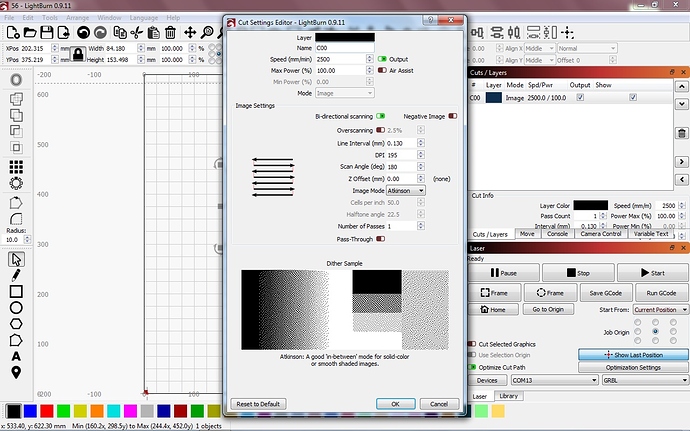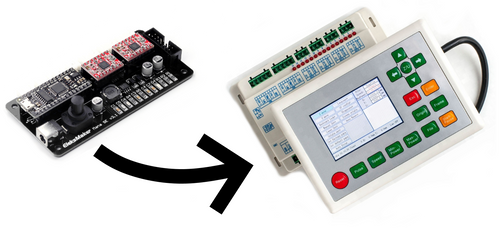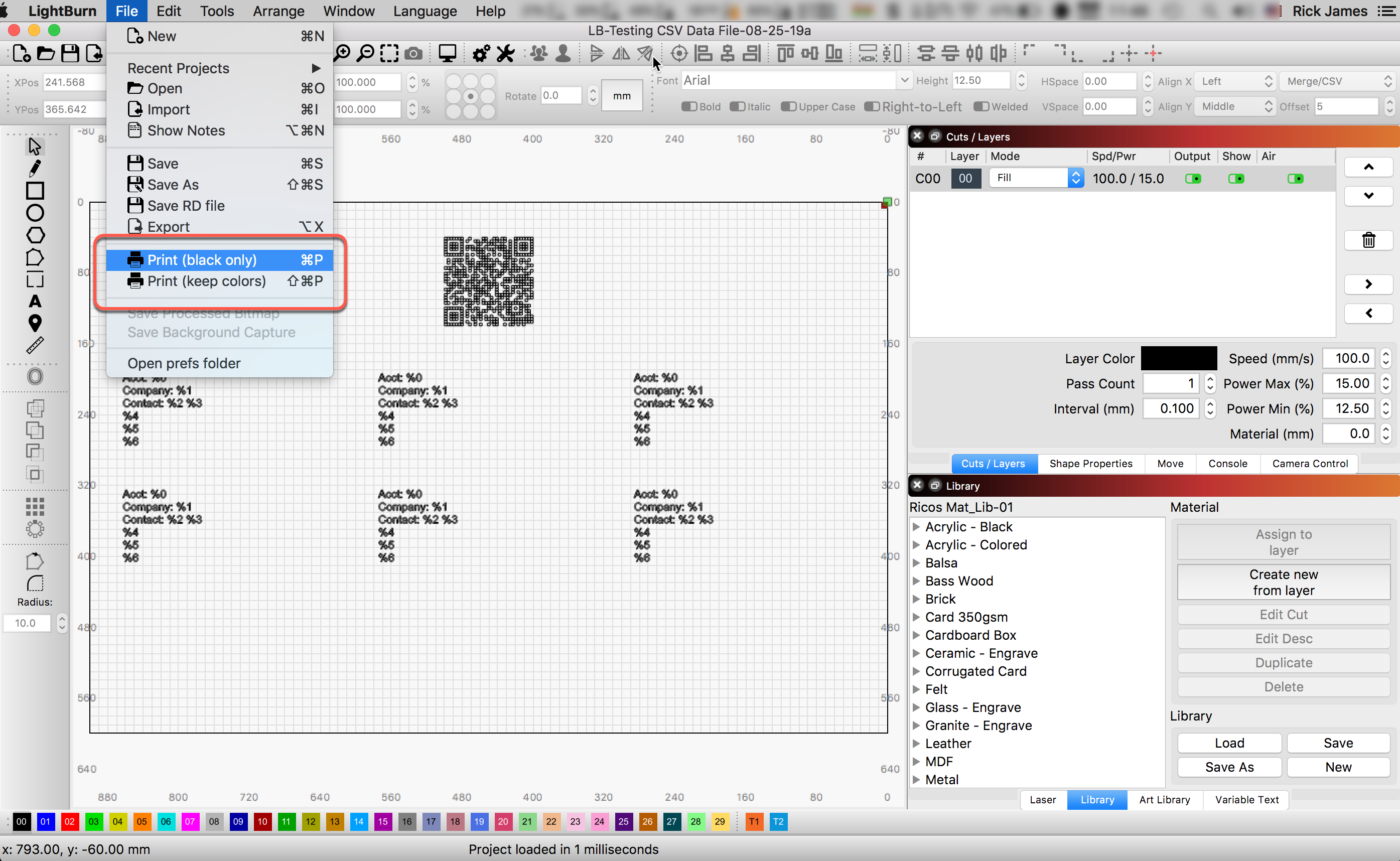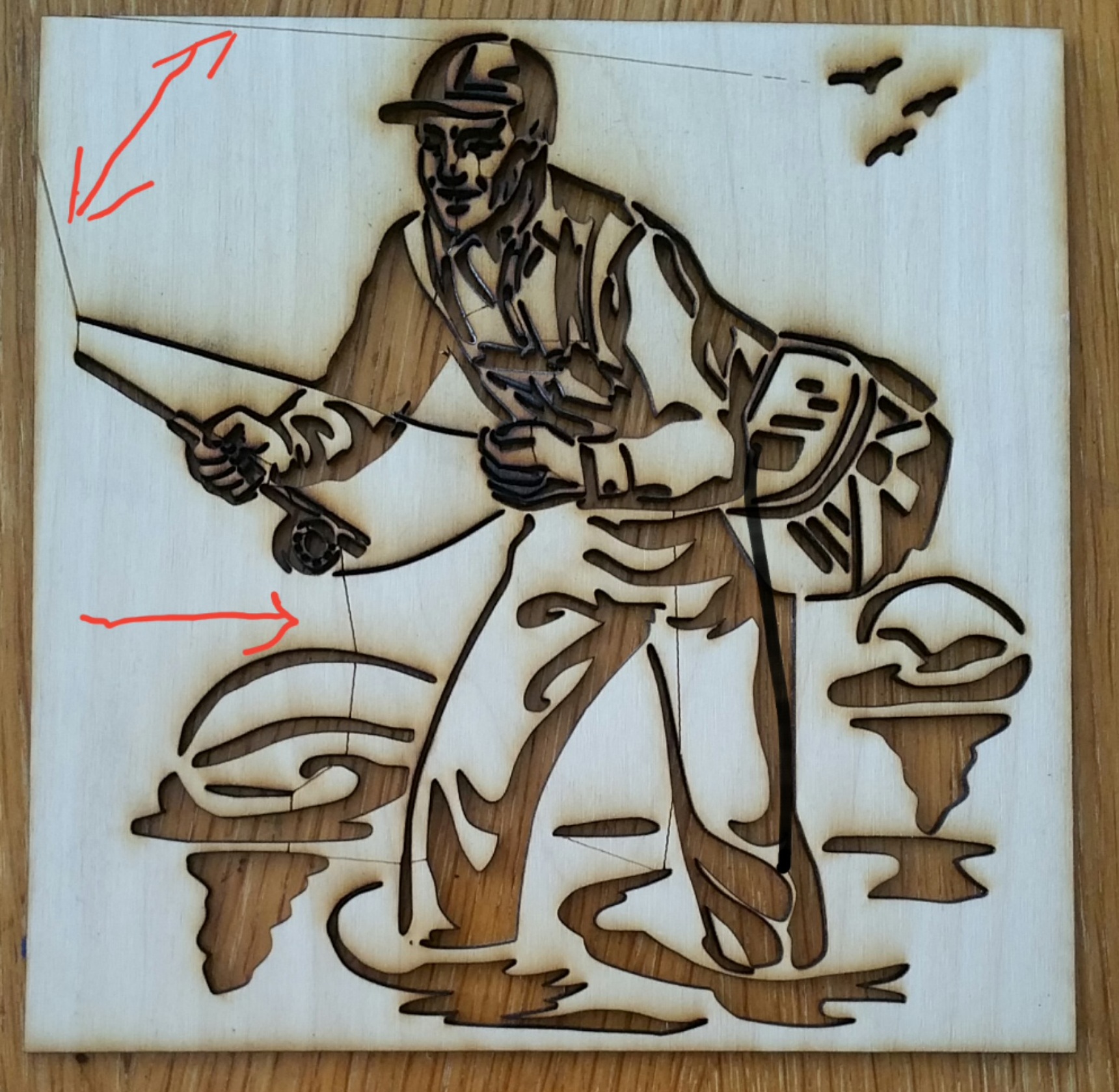

Name the laser and set the size of your work area. The next step is choosing how you connect to your laser. LightBurn will open the New Device Wizard, and the first thing you’ll see is a list of the controllers supported by your version of LightBurn: To add your laser in LightBurn you can click the ‘Create Manually’ on the Devices page. Here you will see a list of all the laser devices you’ve added to LightBurn, or an empty list when you’re first starting. If you don’t pick one, we have nowhere to put these settings, and a number of features within LightBurn will not work until this is set up. LightBurn can also be configured to control more than one laser, and there are settings stored for each device. If you’ve done this before, but want to change your laser, or add a new one, click the ‘Devices’ button in the Laser Window to bring up the devices list. It is important that you pick something because the interface in LightBurn will change depending on the capabilities of the laser you choose. If you’ve never configured a device in LightBurn, you’ll be brought here automatically when you run the software.

LightBurn can’t control every laser, but it can talk to a number of different types of laser controllers, all of which use different ways of communicating and have different abilities and settings. You can get back to it any time in the Help menu, under Help > Quick Help and Notes. The next thing you’ll see is the ‘General Usage Notes’ page – this is a brief help page just to get you going. Once you have activated your license or the trial, click ‘OK’

Double click AppRun inside your Lightburn folder.Right click AppRun > Properties > Permissions > ‘Allow executing file as program.Extract the folder wherever you want Lightburn to exist.7z file, and follow the appropriate steps below. Download the Linux 64-bit version, either the.IMPORTANT! Log out and log back in (this refreshes the permissions we just added).Open a terminal and run the following command: Sudo adduser $USER dialout & sudo adduser $USER tty.

From now on you can just launch the application normally. When MacOS asks if it should open the program, say yes, and it will be listed as an exception in your launcher. Hold the Command key and double-click the LightBurn icon, or two-finger tap the icon. This means that you will need to tell MacOS that you trust us. Please note that at this time, LightBurn for MacOS is not digitally signed. MARCOS INSTALLATIONĭouble-click the LightBurn.dmg file to mount the disk image.ĭrag the LightBurn application into your applications folder.Įject the LightBurn disk image, or drag it to the trash bin. That’s it! Locate the LightBurn icon to launch the program.


 0 kommentar(er)
0 kommentar(er)
